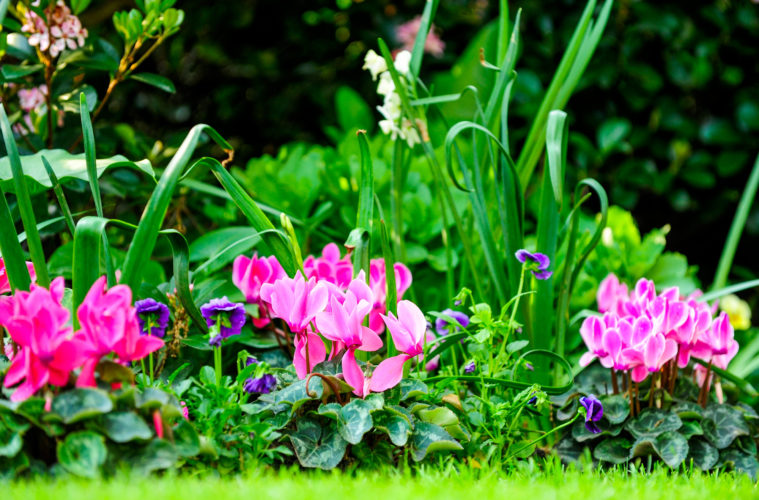This winter add a bit of heat to your garden and home with flowering cyclamens
Originating in the harsh environs of south-western Turkey across to Israel, these perennials become dormant in hot dry summers. They emerge in the cool autumn months and flower through a moist winter, before retreating once again into dormancy in late spring when the days get warmer.
There are thought to be 23 species of cyclamen, most of which are native to the areas around islands in the Mediterranean. In South Africa, only Cyclamen persicum and its hybrids are readily available. There are also dwarf and bicoloured varieties available. Not many people know, but some varieties exude a delicate perfume – strongest in the white and pinks.
When buying a cyclamen, make sure it’s a healthy plant that’s not wilted and has plenty of new buds.
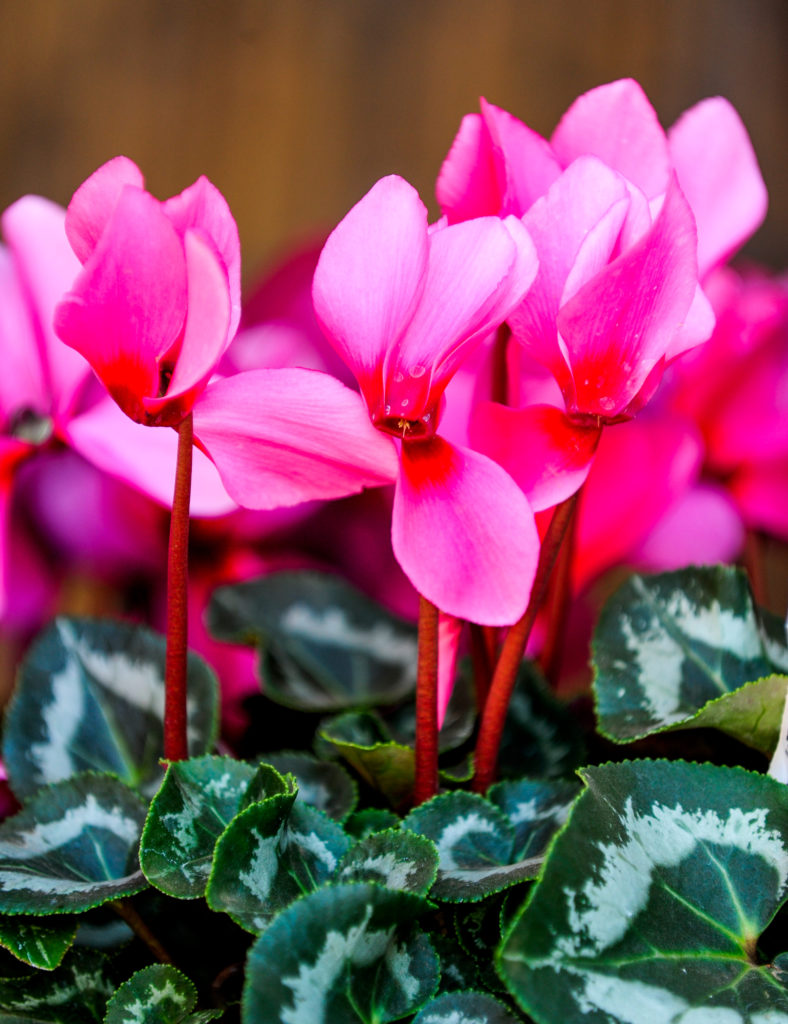
Growing cyclamens indoors
Cyclamens are staple indoor plants for winter colour. They aren’t fussy, but need some general maintenance. With a little care, you can expect at least 3–4 weeks of blooming and flowers right through to spring. They do best in very well-lit areas, atriums with south-facing windowsills being ideal. The quickest way to kill your cyclamen is to position it in a hot, dry environment, so keep it well away from heaters and fireplaces.
If you have an abundance of blooms, pick a few for the vase. They last quite well, especially if you add Chrysal cut-flower food to the water.
As spring approaches and the tuber gets ready for hibernation, the flowers fade and the leaves yellow. Most people think that they’ve killed the plant and relegate it to the compost heap. However, you can keep the plants going for many seasons. Simply start reducing the amount of water, stopping completely once it has died down. Then store the pot in a dry, well-ventilated cupboard or shed. Make a note in your diary to check your plants from late summer and resume watering and feeding as new growth appears.
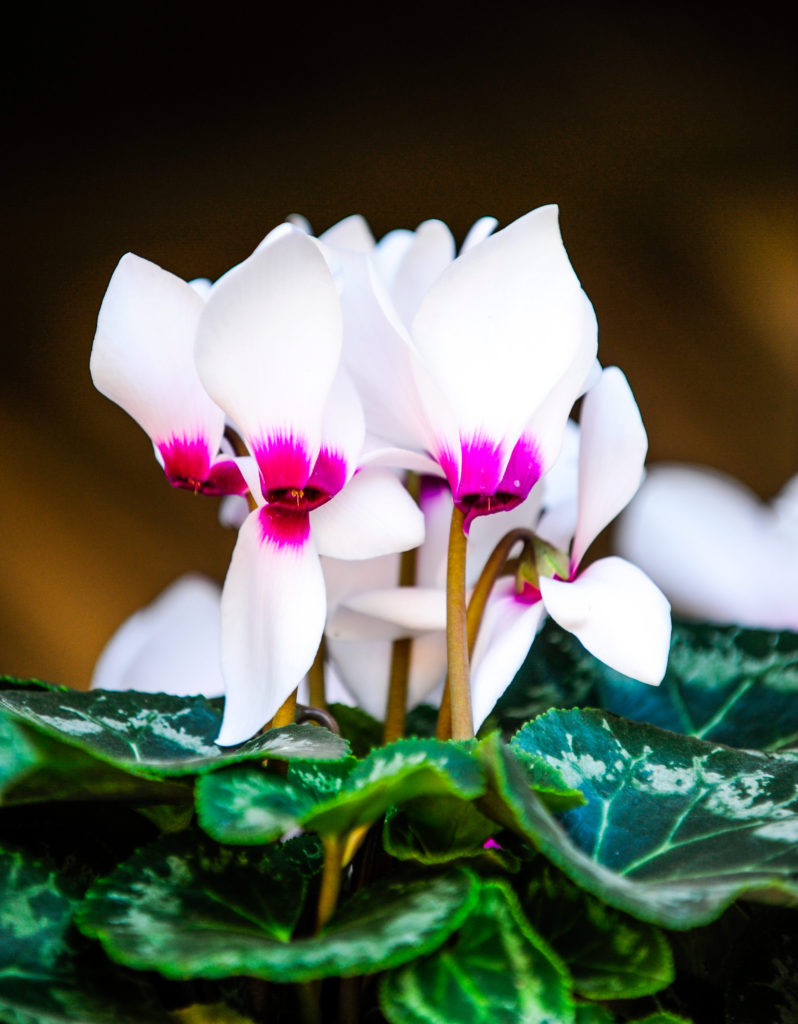
Growing cyclamens outdoors
One of the best kept secrets is that cyclamens perform really well outdoors and can be used in a variety of settings. Use them on a patio or grouped together along the front of your beds for maximum impact. You can plant them in strawberry planters and hanging baskets interplanted with violas.
The best spot for them is a shady area with a bit of morning sun and preferably some cover overhead to protect them from frost. Plant them in compost-enriched, well-drained soil. A good idea is to plant them pot and all in the bed so that, when they become dormant, they can be easily lifted and stored through summer.
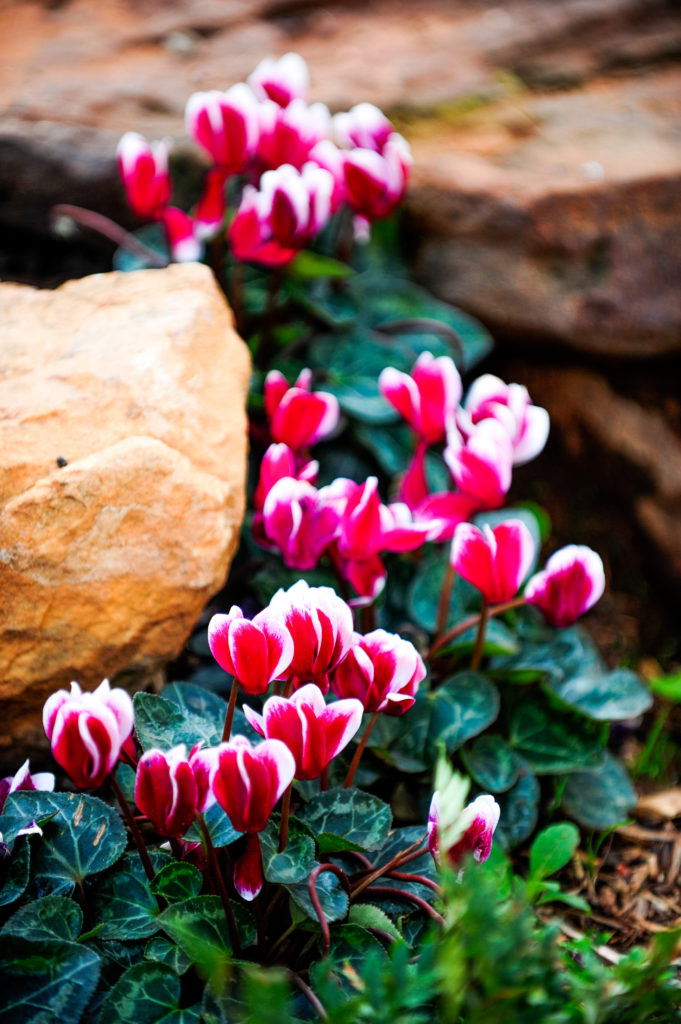
AT A GLANCE
TYPE Tuber
POSITION Indoors in well-lit areas, outdoors in light shade.
PLANTING SEASON April to September.
WATER Keep them moist, but not overwatered.
SIZE 10–20cm.
FROST TOLERANCE Frost tender, but will survive in the Highveld if in a protected position.
CAUTION Keep well away from heaters and fireplaces.
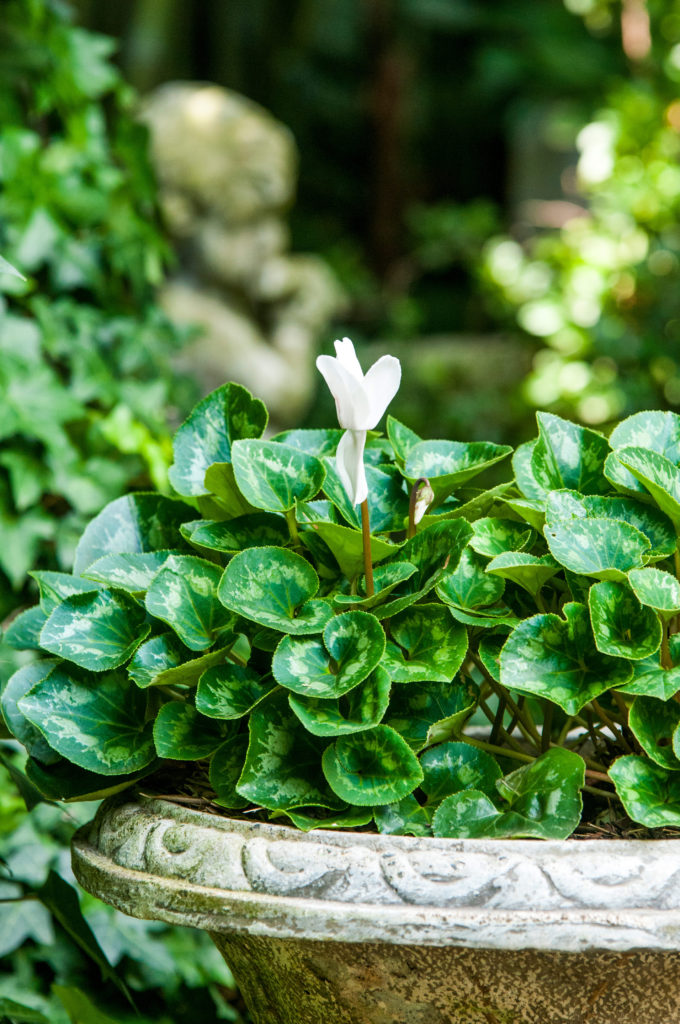
Growing tips for indoors
- Position your pots in a cool, well-ventilated area where there’s good air circulation and bright filtered light.
- Water moderately. Don’t pour water directly onto the tuber, rather stand the pot in water for 10 minutes.
- Remove the spent leaves and flowers by pinching and twisting them gently off from the base of the stems.
- Feed with a low-nitrogen liquid fertiliser like Pokon Universal every two weeks.
- Reduce watering as the leaves die down after flowering.
- Keep in a cool, dry, airy spot through their summer dormancy.
- When the tubers have outgrown their pots, repot while they’re dormant.
- TIP When you let out your dogs for their last sniff around in the evening, take out your pots as well. Put them in a sheltered spot on the patio away from frost and leave them there overnight. They adore the cool night air and will flower longer and more vigorously.

